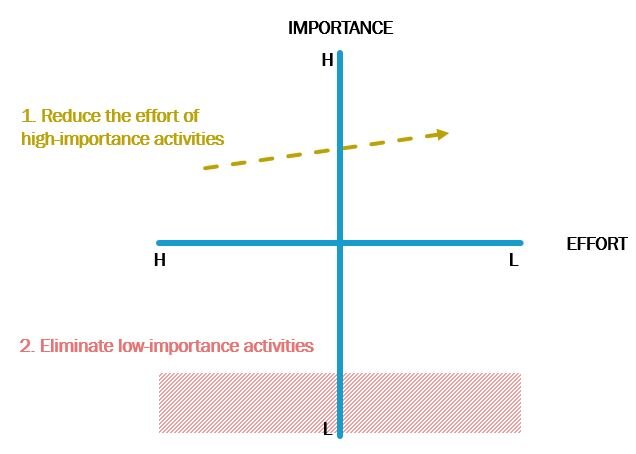Preparing for Growth: Streamlining Business Processes

In the early stages of a business, many owners implement processes that don’t scale, such as direct sales, manual assembly, and delivery of product by hand. This is often because they don’t have the sales volumes to make automated or systemised processes worthwhile.
Owners are learning the business, understanding which activities are critical (“high-importance”) and what aren’t. They’re also finding out which activities take up a heap of time or cost a lot of money (what I like to call “high-effort” tasks).
Once the business starts to grow, these high-effort activities and processes are limiting because the business owner can’t wear every hat anymore. This ends up preventing growth and causing customer dissatisfaction.
The purpose of streamlining your business is so that it can perform as many high-importance activities for the lowest possible effort, without sacrificing product quality or customer service.
Identifying high-importance or high-effort activities
Working out which activities are important or high-effort is not complex to do, but it does require taking a step back from daily business operations.
You and your team should take time outside of your normal workplace to list all the activities your business performs.
Once you’ve done that, ask the following two questions:
How important is this activity? If the activity was performed to a lower standard, or not performed at all, how much would it impact the business?
How much effort does this activity take? Does this activity take a significant portion of your business’s time or money to perform?
We suggest mapping your activities on a matrix similar to the one below:

Taking Action
Once you’ve mapped your activities, your team should focus on the following:
- How do we reduce the effort for high-importance activities?
- How do we remove low-importance, high-effort activities?

There are many approaches that can be taken to deliver the above, such as:
- automation,
- simplification (removing unnecessary steps),
- proceduralisation (documenting vaguely defined processes),
- consolidation (combining multiple similar activities into one),
- removal of the activity if it adds no value
and many others that can be applied depending on the particular business process/activity to be streamlined.
The End Result
Taking the time to perform this analysis yields many benefits for your business, such as:
- A uniform understanding of how the business works and which activities are important
- Where resources are being allocated within the business
- Communication of ideas and processes across areas of the business
- A clear plan for which activities need streamlining, and how to do it
We have a number of tools that can assist any business owner in performing this review.
If you’d like to know more, or get some assistance in setting a review up for your business, get in touch here.
